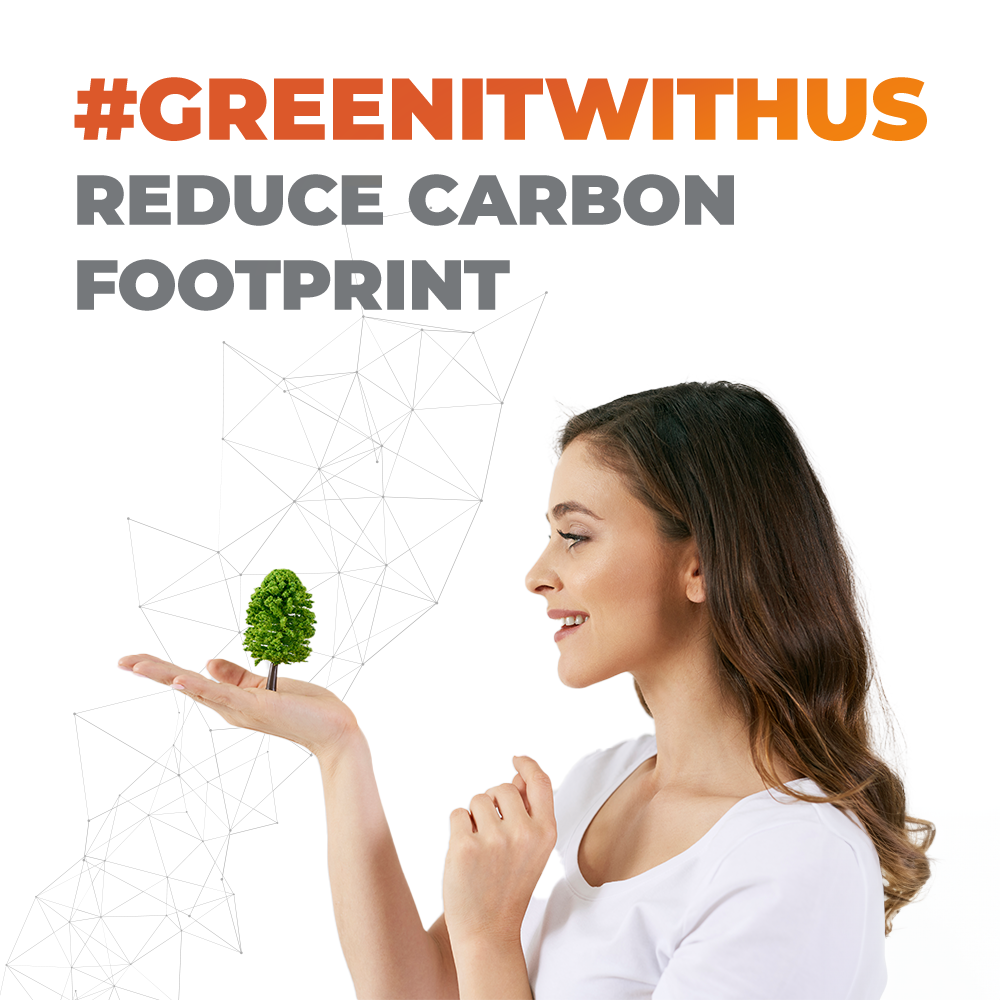Why does carbon footprint matter and how to decrease it – this subject was discussed at a special webinar organized for NATEK employees. At NATEK we take Corporate Social Responsibility seriously. Therefore, we wanted the whole team to gain more knowledge and play their part in reducing the carbon footprint.
It’s no secret that man- made climate change is real and it poses a great threat to the planet and its inhabitants. As the care of environment is one of our CSR pillars, we wanted to encourage our employees to the CO2 reduction and prepared an exclusive webinar for them!
In July NATEK Team members had a special opportunity to take a closer look at why carbon footprint matters and were discussing this subject with a special host - Janusz Mizerny. Janusz gave us a unique knowledge about the mystery behind carbon footprint and busted some myths.
Climate was already changing… but never so fast
The last time Earth's atmosphere contained this much CO2 was more than three million years ago, when sea levels were several meters higher, and trees grew at the South Pole! Global average long-term atmospheric concentration of carbon dioxide (Co2) was keeping the same, balanced level of 200-300 parts per million (ppm) for 800 000 years, but human activity in recent century doubled that value. The world is also getting warmer – we heated it about 1,2 degrees comparing to pre-industrial times. Thus, the amount of carbon being emitted to the atmosphere is growing immensely- it is currently 60 percent of humanity’s overall Ecological Footprint and its most rapidly growing component. Humanity’s carbon Footprint has increased 11-fold since 1961. Reducing humanity’s carbon Footprint is the most essential step we can take to end overshoot and live within the means of our planet.
What is a Carbon Footprint?
A carbon footprint is the total amount of greenhouse gas emissions that come from the production, use and end-of-life of a product or service. It includes carbon dioxide — the gas most commonly emitted by humans — and others, including methane, nitrous oxide, and fluorinated gases, which trap heat in the atmosphere, causing global warming. Usually, the bulk of an individual’s carbon footprint will come from transportation, housing, and food.
The personal carbon footprint will differ regarding one’s lifestyle- like eating meat, taking fewer connecting flights and line drying your clothes. But no matter how high it is, it should definitely be lowered.
Here are the personal choices to reduce your contribution to climate change ranked by the highest impact to the lowest:
1. Live car free
Going carless for a year could save about 2.6 tons of carbon dioxide, according to 2017 study from researchers at Lund University and the University of British Columbia — that’s a little more than a roundtrip transatlantic flight. How can you stop using a car? Try taking a train, bus or better yet, ride a bike.
2. Fly less
Taking one fewer long round-trip flight could shrink your personal carbon footprint significantly. Think about it this way: If you use public transportation often, and fly home to visit family just occasionally, your carbon footprint might still be relatively sustainable, but if you drive and fly a lot, your emissions will be higher.
3. Buy and use clean Energy
Check your energy supplier and ask if it is possible to supply with the energy that is coming from renewables or nuclear power instead of gas and fossil fuels.One of the good moves for the organizations is also to reduce the energy use by switching to a Cloud-based environment. For instance, by using Microsoft products you can be sure that it is 93% energy efficient and has 98% lower carbon emissions than on site data centers!
4. Eat less meat
While food systems are complicated, and research is still evolving on what the most environmentally friendly diet is, experts mostly agree that cutting down on meat, and red meat in particular, is a better choice for the environment. This is because the production of red meat uses a lot of feed, water and land. Cows themselves also give off methane emissions (a harmful greenhouse gas).
5. Consume less
Consuming less means wasting fewer resources and thinking more seriously about sustainable options for living. At first, use what you already have. Then, think of repairing, borrowing or swapping things you are really in need. Buy second-hand and finally choose the do-it-yourself option instead of buying new.
The care for the environment is in our DNA, thus we have implemented various actions to NATEK organization to reduce the carbon footprint.
We know perfectly well, that small changes make a big difference. Do you?
All of these actions and many more are gathered in NATEK Environmental Policy.



